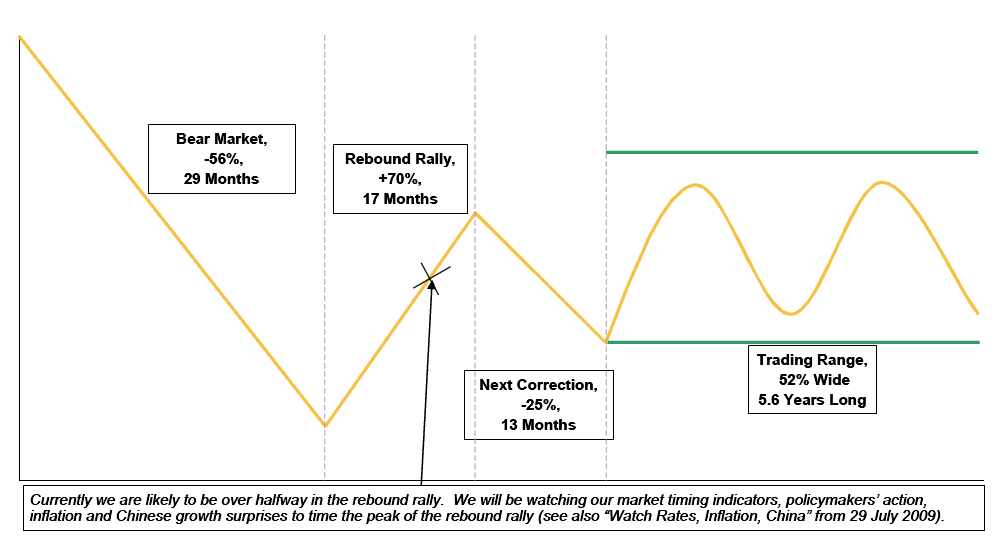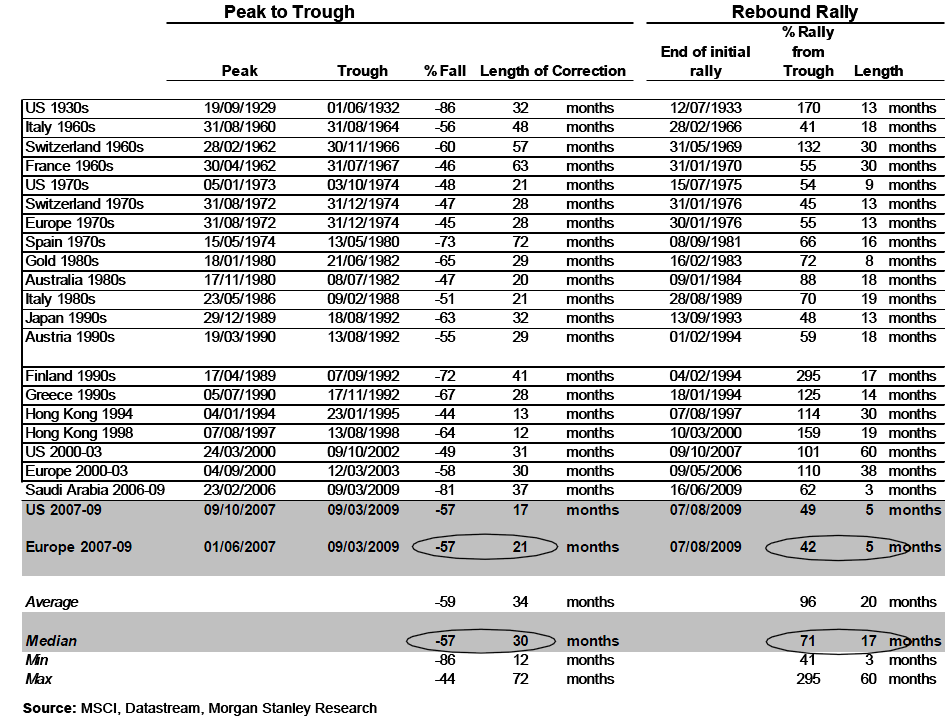
 Many investors regard analyst reports with a lot of reservation and cynicism, and rightly so. Finally, somebody has dug up enough dirt and evidence. The fact that its Goldman Sachs will mean the regulators and politicians will be sharpening their knives for the kill. Goldman Sachs will get a major major fine here. When an investment bank relies so much on trading for such a huge slice of their profits, and where profits contribution is regarded so highly, where you bonuses and promotion will be materially affected when you "contribute well", its hard not to have shenanigans sprouting everywhere - the smart ones don't get caught. There are always someone somewhere who will get the tip earlier than you, and by the time it is printed, rest assured the thing has been double-dipped already.WSJ: Goldman Sachs research analyst Marc Irizarry's published rating on mutual-fund manager Janus Capital Group Inc. was a lackluster "neutral" in early April 2008. But at an internal meeting that month, the analyst told dozens of Goldman's traders the stock was likely to head higher, company documents show (the following day apparently).
Many investors regard analyst reports with a lot of reservation and cynicism, and rightly so. Finally, somebody has dug up enough dirt and evidence. The fact that its Goldman Sachs will mean the regulators and politicians will be sharpening their knives for the kill. Goldman Sachs will get a major major fine here. When an investment bank relies so much on trading for such a huge slice of their profits, and where profits contribution is regarded so highly, where you bonuses and promotion will be materially affected when you "contribute well", its hard not to have shenanigans sprouting everywhere - the smart ones don't get caught. There are always someone somewhere who will get the tip earlier than you, and by the time it is printed, rest assured the thing has been double-dipped already.WSJ: Goldman Sachs research analyst Marc Irizarry's published rating on mutual-fund manager Janus Capital Group Inc. was a lackluster "neutral" in early April 2008. But at an internal meeting that month, the analyst told dozens of Goldman's traders the stock was likely to head higher, company documents show (the following day apparently).
The next day, research-department employees at Goldman called about 50 favored clients of the big securities firm with the same tip, including hedge-fund companies Citadel Investment Group and SAC Capital Advisors, the documents indicate. Readers of Irizarry's research didn't find out he was bullish until his written report was issued six days later, after Janus shares had jumped 5.8%. Every week, Goldman analysts offer stock tips at a gathering the firm calls a "trading huddle." But few of the thousands of clients who receive Goldman's written research reports ever hear about the recommendations. At the meetings, Goldman analysts identify stocks they think are likely to rise or fall due to earnings announcements, the direction of the overall market or other short-term developments. Some of their recommendations differ from ratings printed in Goldman's widely circulated research reports. Some Goldman traders who make bets with the firm's own money attend the meetings. Critics complain that Goldman's distribution of the trading ideas only to its own traders and key clients hurts other customers who aren't given the opportunity to trade on the information.
Securities laws require firms like Goldman to engage in "fair dealing with customers," and prohibit analysts from issuing opinions that are at odds with their true beliefs about a stock. Steven Strongin, Goldman's stock research chief, says no one gains an unfair advantage from its trading huddles, and that the short-term-trading ideas are not contrary to the longer-term stock forecasts in its written research.
Former Goldman client George Klopfer of Park City, Utah, who was unaware of the trading tips until recently, says the practice is unfair. "When I joined Goldman as a client, I got all these fancy brochures saying they put the client first," he says. "I just don't want to have to worry about them or big clients trading on stuff like this. I was at the end of the food chain." He says he pulled out most of the $20 million in his account earlier this year after losing money on several Goldman funds. Goldman says individual clients like Mr. Klopfer typically have a long-term investing approach and are not focused on individual stocks.
Since the trading huddles began about two years ago, Goldman has supplied "trading ideas" on hundreds of stocks to the traders and top clients, according to internal documents reviewed by The Wall Street Journal.
Goldman spokesman Edward Canaday says the tips are "market color" and "always consistent with the fundamental analysis" in published research reports. " (My, talk about the ability to b.s.). Analysts are expected to discuss events that may have a near-term or short-term impact on a stock's price," he says, even if that is a different direction from an analyst's overall forecast. Goldman's published research reports include a disclosure that "salespeople, traders and other professionals" may take positions that are contrary to the opinions expressed in reports. But the firm doesn't disclose the trading huddles. (In effect, some of the better trading ideas would have Goldman traders and inner circle of important clients betting ahead of the pack... how is that not against the law, its called front running).
Mr. Canaday says analysts are told that any comment at a meeting that could result in a change in a rating, earnings estimate or stock-price target "must be published and disseminated broadly to all clients." He adds, however, that it is rare that tips arising from the meetings reach that threshold. He says ratings changes after the meetings also are rare.
The tips usually go to top clients who have expressed interest in having the information and have short-term investment horizons, he says. Goldman doesn't want to overload other clients with information that isn't relevant to them, he says. "We are not in the business of serving thousands of retail customers," he says.
At least one competitor discloses such trading tips much more broadly. Morgan Stanley's research department sends blast emails with short-term views on various stocks to thousands of clients, and posts the information on its Web site. It doesn't call customers to convey the tips, because Morgan Stanley officials decided that could expose the firm to questions about selective disclosure, according to people familiar with the matter. (At least there is still some body operating with some principles).
Critics of Goldman complain that the firm's limited distribution of trading tips hurts small customers who don't share the information. "The spirit of the law is twofold," says Eric Dinallo, who in 2003, when serving as a deputy to former New York Attorney General Eliot Spitzer, helped negotiate a $1.4 billion stock-research settlement with 10 major Wall Street firms, including Goldman. "Analysts should give consistent advice to all their customers, be they small investors or big trading clients." Any views that differ from an analyst's published rating but are "worth sharing with certain customers," he says, should be made "available to everyone."
The 2003 case involved allegations that Wall Street firms were issuing overly optimistic stock research in order to win more lucrative investment-banking business. The settlement, in which Goldman and the other firms didn't admit or deny wrongdoing, erected walls between research and investment banking. Securities laws currently require research analysts to personally certify that their reports accurately reflect their views of a stock.
Some analysts have gotten into big trouble by contradicting themselves. In 2003, former Merrill Lynch & Co. technology analyst Henry Blodget agreed to a lifetime ban from the securities industry after touting stocks that he disparaged in private emails.
These days, analysts must juggle growing demands from trading units at their firms. Such operations have emerged as big moneymakers, fueling the record $3.44 billion in net income at Goldman in the second quarter. A large portion of Goldman's profit came from trades done for mutual funds, pension funds, endowments, hedge funds and other big institutional investors. Proprietary trading, in which Goldman makes bets with its own capital, accounts for about 10% of its profits.
Analysts have a financial incentive to give clients useful information. Goldman sets aside roughly 50% of money allotted each year to analyst compensation to distribute based on feedback from trading customers. The balance of analysts' pay is determined by the performance of their stock picks. That pay system is common among major Wall Street firms.
At many firms, traders, salespeople and analysts hold early-morning calls to review ratings changes, recommendations and market events. Throughout the day, analysts talk to key clients to help them interpret research reports and provide more detail on specific events such as earnings.
The research business is considered a loss leader at most firms, despite persistent attempts by Goldman and other securities giants to squeeze more revenue from it. Goldman was looking for a leg up on rivals when it started the trading huddles in 2007. That year, Goldman ranked ninth in Institutional Investor magazine's annual list of the best equity analysts, as determined by a survey of big institutional investors. Goldman was rated eighth in last year's competition.
The huddles began in earnest around the time Goldman's research department got a new boss, Strongin. He came to the firm in 1994 from the Federal Reserve Bank of Chicago, where he had been director of monetary-policy research. At Goldman, he had run the commodities-research operation, then was co-chief operating officer of the whole research unit, before being asked to run it in April 2007. Strongin, 51 years old, set out to improve Goldman's research operations. The firm asked important clients for suggestions. One idea that took hold was giving certain customers and traders more access to stock tips.
The idea was controversial with some Goldman research staffers. "I am not sure we should be giving recommendations that go against our research," said one Goldman employee at a meeting where the trading huddles were discussed, according to one attendee.
Laura Conigliaro, Goldman's co-head of research in the Americas region, replied at the meeting that the firm needed to respond to inevitable differences in the time horizons of investors. Issuing a short-term buy recommendation wasn't necessarily at odds with a lukewarm "neutral" rating for the long run, she added.
One recipient of the trading tips, Steve Eisman, a managing director of hedge fund Frontpoint Partners LLC, says that he likes the back-and-forth he now has with Goldman's analysts, and that he pays attention to some of the tips. "A few years ago, Goldman wouldn't make a negative call on anything," he says. "Now they say it like it is."
The huddles can last from 20 minutes to one hour, according to participants. Analysts are encouraged to bring a trading idea. They talk with Goldman traders about the financial markets and events that could trigger movement of specific stocks. Goldman specifies how long each recommendation is in effect, often one week.
At a huddle on July 31, for example, the firm's technology analysts and traders discussed more than a dozen stocks, ranging from Garmin Ltd. to Microsoft Corp. None of the analysts said anything that appeared to differ from their stock ratings.
Compliance officers sit in on almost all the meetings, Goldman says. Research analysts say they have been guided on what language to use in the huddles. Words like "buy" and "sell" are to be avoided, while "run up," "give back" and "oversold" are encouraged. Internal documents reviewed by the Journal initially tracked the trading-huddle tips as "buy" or "sell," but now refer to them as "up" or "down."
Research-department employees prepare telephone scripts, then call top clients, typically several hours after the meeting has ended. Goldman says its in-house traders are prohibited from trading on the tips until after they've been relayed to clients. (Yeah, sure...).
Documents reviewed by the Journal indicate that anywhere from six to 60 clients are contacted, depending on the investment. For example, clients specializing in financial stocks are given recommendations about that sector. Each call typically includes comments about the overall market and the kinds of investors Goldman believes are propelling it, and ends with a stock tip.
The meeting where Irizarry suggested that Janus shares were worth buying, held on April 2, 2008, was attended by Goldman's financial-research analysts and traders who handle customer orders. It also included another class of traders called "franchise risk managers," who sit with and advise the traders handling customer orders -- and make bets with Goldman's money.
Typically, traders who wager firm capital are walled off from those handling customer orders so that they don't take advantage of information about client trading, which securities regulations forbid. Goldman says its franchise risk managers don't trade on client information and must first share trading-huddle tips with clients before acting on the tips themselves.
At the April 2 meeting, Goldman says, Irizarry was expressing a sentiment about Janus similar to one contained in a report Goldman published the previous day. A chart in that report, Goldman says, cited a report from mutual-fund-research firm Morningstar Inc. that was positive on Janus. While internal documents show Irizarry's rating on Janus stock at the time was "neutral," they note the "price action expected" was "up." Irizarry declined to comment. The day after the meeting, Goldman told selected clients that "in particular, we highlight Janus," according to an internal document.
At the same April 2 trading huddle, Goldman analyst Thomas Cholnoky said he favored MetLife Inc. over other insurers, according to notes from the meeting. Internal documents indicate he believed the stock would rise over the short run. Hours after the meeting, Cholnoky released a research report that reiterated his "neutral" rating on MetLife, saying he hadn't changed his estimates. Goldman says his view about the company's favorable short-term prospects is clearly conveyed in a research note issued prior to the huddle, which said the insurer "stands to be the biggest beneficiary from the steepening yield curve."
A week later, Cholnoky boosted his rating on MetLife to a buy, and Goldman added the stock to its "America's Buy List" of top stock recommendations. Cholnoky said he expected MetLife's quarterly results, due in a few weeks, to "surprise on the upside." (The quarterly results, when they came out, did slightly.) Cholnoky, who no longer works at Goldman, didn't respond to messages seeking comment.
Goldman says that in both these cases the analysts' views were consistent with the published research, which included a 12-month price target that was above each stock's price at the time.
Morgan Stanley also generates short-term views on various stocks, which it calls "Research Tactical Ideas" and distributes widely via email and the firm's Web site. In May, for example, it told clients that insurer Aflac Inc.'s earnings guidance would be "softer than many investors expect." Its rating on Aflac at the time was "neutral."
In its longer-term reports published by analysts, Morgan Stanley discloses that it issues such trading tips, and that the tips on any given stock "may be contrary to the recommendations or views expressed in this or other research on the same stock."
Last year, the Financial Industry Regulatory Authority, the industry's self-regulatory body, proposed new rules meant to clarify existing disclosure obligations under the rule requiring "fair dealing" with all clients. Firms could issue contradictory ratings as long as clients were told that such inconsistencies were possible.
A Finra spokesman said the agency still is reviewing comment letters filed in response to the proposal. Goldman hasn't commented on the proposed rules.
p/s photos: KC Concepcion








![[Goldman's Trading Tips Reward Its Biggest Clients]](http://s.wsj.net/public/resources/images/P1-AR261A_GOLDM_NS_20090823184910.gif)
![[Goldman's Trading Tips Reward Its Biggest Clients]](http://s.wsj.net/public/resources/images/P1-AR262A_GOLDM_NS_20090823185024.gif)











 (
(
